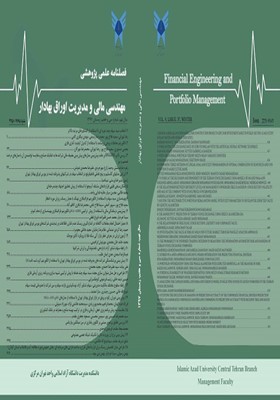When Behavioral Portfolio Theory meets mean-variance frontier
Subject Areas : Financial engineering
mohammad sajjad moghaddam
1
![]() ,
Fereydon Ohadi
2
,
Fereydon Ohadi
2
1 - Finance,Medical Sciences and Technologies,Science and Research Branch,Tehran,Iran
2 - Managament,Accounting and Management,Islamic Azad University,Karaj,iran
Keywords: Portfolio optimization, Behavioral Finance, Behavioral Portfolio Theory, Mean Variance Theory,
Abstract :
Finding the most optimize way to make a portfolio “ feasible “ has been ,and always will be a challenge and concern for those active in investment management industry. For several decades, Markowitz's (1952) Mean Variance Theory (MVT) has been considered as the cornerstone of modern portfolio theory. The Behavioral Portfolio Theory (BPT) developed by Shefrin and Statman (2000) is often set against Markowitz's (1952) Mean Variance Theory (MVT). In this paper, we compare the asset allocations generated by BPT and MVT without restrictions. Using Tehran Securities Exchange stock prices from the TSE database for the 2012– 2017 period, A sample of 247 companies are listed on the Tehran Stock Exchange data for a period of 5 years was used for statistical analysis . stock prices contained in the TSE database to generate a possible asset allocations via bootstrap simulation.this paper is the study that empirically determines the BPT optimal portfolio.We show that Shefrin and Statman's (2000) optimal portfolio is Mean Variance (MV) efficient inmore than 70% of cases.
_||_


